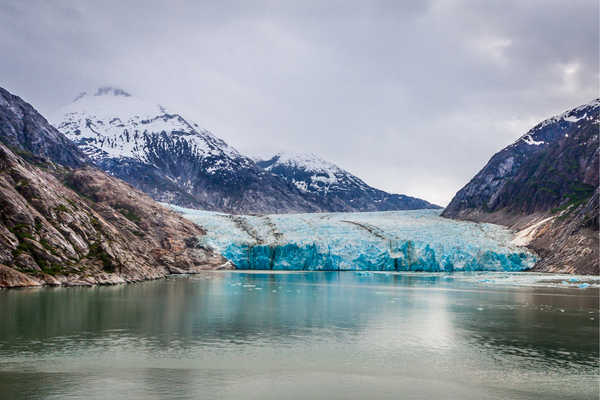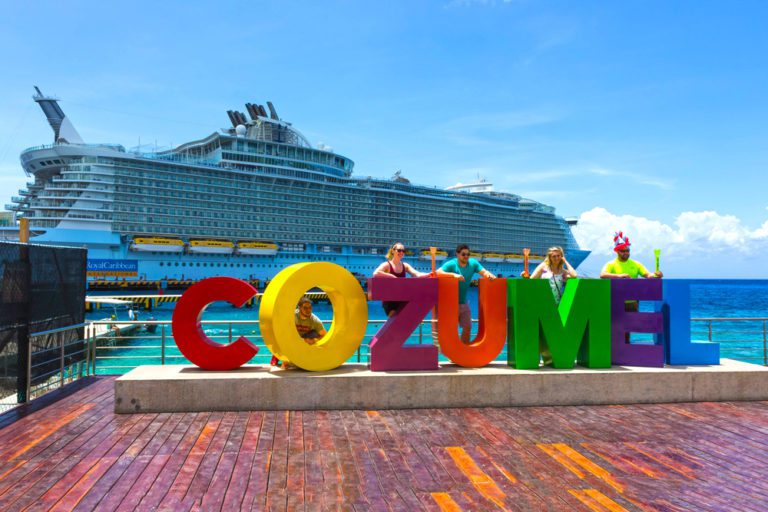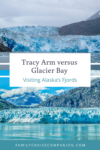Alaska is a dream cruise destination for many holidaymakers. The ruggedness, seclusion, spectacular scenery, and wildlife cater to many interests. Notably, Alaska is home to roughly 27 000 glaciers, some of which are only accessible by boat. When planning Alaska cruise excursions, many folks want to know as between Tracy Arm vs Glacier Bay which is better.
Tracy Arm and Glacier Bay are fjords that offer a scenic getaway for people interested in nature and the tundra regions. Below, we’ll investigate both areas in more detail – what makes them special, their similarities, and the reasons for visiting these majestic preserves. So, if you are planning an Alaska itinerary, keep reading for an in-depth look at these two popular destinations.
What Is A Fjord?
You may be wondering what exactly is a Fjord anyway? Here’s a quick answer.
A fjord is a long and narrow inlet that is typically U-shaped and has steep walls. Fjords are created when a glacier melts, leaving a deep depression in the landscape. The word “fjord” comes from a Norwegian word that means “bay.”
Fjords are found in Norway, Iceland, Greenland, and Alaska. They can be hundreds of miles long and dozens of miles wide. They are often surrounded by snow-capped mountains and lush green valleys.
Fjords usually have a very deep water column that runs thousands of feet below sea level. This high water column results from glacial erosion: the weight of the ice sheet pushing down on the land scrapes away the surface layer of rock, revealing the harder bedrock beneath.
Overview of Glacier Bay
Glacier Bay is at the heart of the Glacier Bay National Park and Preserve, and it is aptly named for its stunning glacier formations. The national park is on the southeastern coast of Alaska and was proclaimed a national monument in 1925.
Glacier Bay offers visitors many spectacular views of wildlife and the rugged tundra. The tide in the bay is of special interest, which rises and falls by as much as 20ft (vertically) twice a day.
The glaciers of Glacier Bay are receding (shrinking), along with most of the other melting glaciers in Alaska. Since the 1950s, there has been approximately 11% less ice than before.
Glacier Bay Physical Characteristics
Glacier Bay National Park protects a wilderness area of roughly 5 129 square miles (3 282 560 acres), which includes Glacier Bay, Mount Fairweather, and the Alsek River.
Glacier Bay is approximately 50 miles long and forms a fjord between the St Elias Mountain Range and the Fairweather Range (in the west). The glaciers the bay is famous for originally moved down from these mountains.
According to the National Park Services of Alaska, there are more than 1 000 glaciers in Glacier Bay (good luck picking your favorite!). Many of these glaciers are terrestrial, but there are several tidewater glaciers.
A tidewater glacier is a glacier that ends in the ocean. The weight of the ice causes the glacier to break off, or calve, chunks of ice that float away as icebergs.
Aside from glaciers, the bay has several islands. These islands are home to many seabirds, which use them as nesting grounds.

Glacier Bay Activities And Points Of Interest
The most obvious draw to Glacier Bay is the spectacular glaciers. Tourists access these glaciers on cruise ships or private vessels.
Johns Hopkins Glacier
The John Hopkins Glacier (JHG) is the largest tidewater glacier in Glacier Bay. It is between 225 and 300 feet high, roughly 200 feet deep (from the waterline), and around 1 mile wide.
JHG is the region’s most “active” glacier and moves (down toward the ocean) at roughly 5 to 12 feet per day, slightly faster than the 8 feet a day recorded in 1970.
Since 1990, the JHG and the Gilman Glacier have joined and separated repeatedly. The most recent join was in 2000 along JHG’s eastern edge. They later separated in 2016.
A standout feature of JHG is that the glacier calves chunks of ice under the water. These chunks of ice “bob” up (often explosively) randomly and provide tourists with a fantastic display. Spectators must keep a safe distance (roughly 2 miles) from the glacier.
Grand Pacific Glacier
The Grand Pacific Glacier (GPG) is considerably slower than the John Hopkins Glacier, with a daily rate of 0.5 to 1 foot. The GPG varies between heights of 65 and 165 feet, is 1.35 miles wide, and stretches for more than 20 miles.
The GPG joined with the Margerie Glacier in 1992; however, they split as the GPG receded. The GPG has a brown hue from rock and dirt moving into it from the Ferris tributary (scraping the surrounding mountains).
Other Activities At Glacier Bay
Aside from visiting the spectacular (and numerous) glaciers, Glacier Bay offers visitors:
- Wildlife viewing
- A trip into the Fairweather Mountains
- Guided tours by park rangers
Be sure to pack a good pair of travel binoculars, so you don’t miss a thing!
Glacier Bay History
Glacier Bay is a lingering testament to the end of the last ice age of roughly 10 000 years ago.
Scientists estimate that the Grand Pacific Glacier covered Glacier Bay roughly 200 years ago (up until roughly 1750, commonly called “the Little Ice Age”). The glacier was over 4000 feet thick and 20 miles across.
Over approximately the last two centuries, the glacier shrank, exposing the Glacier Bay we know today.
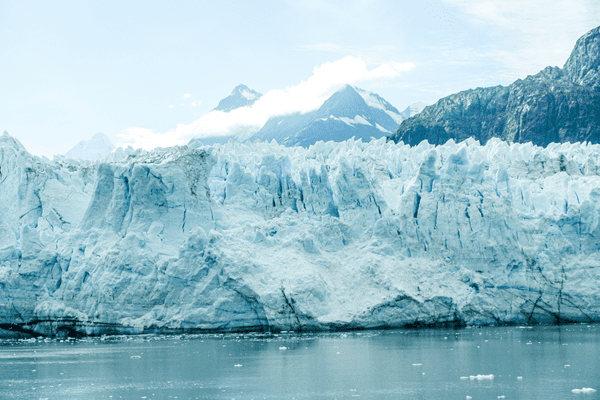
During his expeditions in 1880, Captain Lester A. Beardslee of the U.S. navy dubbed the area “Glacier Bay.
In 1980, Alaska authorities proclaimed Glacier Bay a national park and wildlife preserve, and in 1992 the UN declared Glacier Bay a UNESCO World Heritage Site.
Overview of Tracy Arm
Tracy Arm Fjord (Tracy Arm) is roughly 50 miles from the town of Juneau (halfway between Juneau and Petersburg). The U.S. Congress gave the area protected status in 1980 as the Tracy Arm-Fords Terror Wilderness.
The area is protected and managed to preserve the rugged wilderness area and to ensure that the ecosystem perseveres.
The fjord is at the heart of the Tracy Arm-Fords Terror Wilderness Area, which forms part of the Tongass National Forest. The area showcases the spectacular scenery as the fjord’s two narrow arms (Tracy and Endicott) cut through the surrounding mountains.
The arms join at Holkham Bay and eventually flow in Stephens Passage.
Visitor access to Tracy Arm is by boat, including cruise ships, personal vessels, and float planes. The glaciers calve frequently, and approaching them is dangerous, so caution (and a safe distance) is advised.
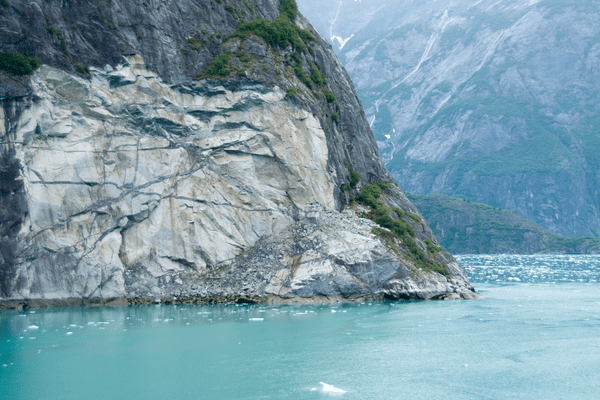
Tracy Arm Physical Characteristics
The Tracy Arm-Fords Terror Wilderness area covers roughly 653,179 acres (1020.59 square miles). The area is predominantly Alpine (up to 75%). There are several glaciers in the area (20 to 25% of the area is covered in glaciers and snow fields), with a tidewater glacier at each fjord’s head.
Tracy and Endicott Arms run for roughly 30 miles and are bordered by sheer walls on either side. The narrow “corridors” are often blocked by chunks of calved ice, up to the size of three-story buildings.
The wilderness area houses an Alaskan rainforest consisting of spruce and hemlock. Most of this vegetation grows on slopes and plateaus at 1 500 feet.
The water in the fjord is around 600 feet deep. This deep water sustains massive chunks of ice which calve free from the glaciers and form icebergs (some of the largest in Alaska).
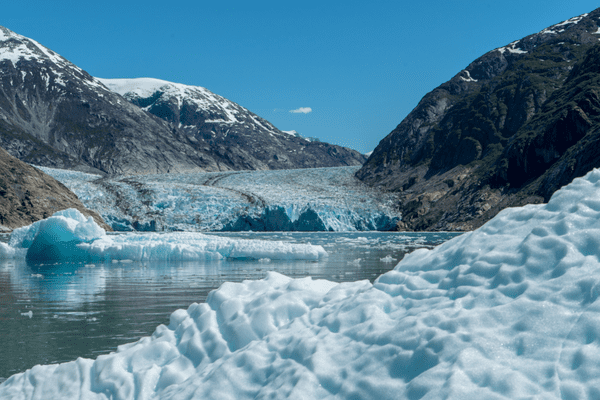
Tracy Arm Activities And Points Of Interest
Tracy Arm has an array of fantastic scenery, including the surrounding mountains, waterfalls, green hills, and glaciers.
The Sawyer Glaciers
There are two Sawyer Glaciers (twins), one in the north and the other in the south. These glaciers are active tidewater glaciers, and cruise ships often cut their engines near the glaciers to listen to the ice breaking while watching enormous chunks break off and land in the ocean.
The North Sawyer Glacier stretches roughly 22 miles through the Coast Mountains into Tracy Arm (in a westerly direction).
The South Sawyer Glacier (located in the east) stretches roughly 33 miles and also runs into Tracy Arm (in a northwesterly direction).
Other Activities At Tracy Arm While Cruising
Although cruise ships don’t anchor anywhere at Tracy Arm, there are many interesting things to see in the area (aside from the glaciers), including:
- Wildlife viewing
- Forested mountains and waterfalls
- Some cruise ships use smaller boats for closer views of the mountains, tributaries, and glaciers.
Tracy Arm History
In 1899, Ford (a navy crewman) explored the area. During his exploration, he paddled into a narrow channel branching off of Endicott Arm and became trapped by a tidal surge (rip-tide) for six hours.
During the last ice age, glaciers covered the fjord (including the Tracy and Endicott Arms). As the climate warmed, the glacier began moving, cutting a swathe through underlying mountain rock, carving out the present-day fjord.
As the glacier continues to recede, more of the fjord becomes exposed.
Tracy Arm Vs Glacier Bay: Key Facts Compared
Both Tracy Arm and Glacier Bay are spectacular places, but they offer different experiences. Tracy Arm is narrower and has more dramatic ice cliffs. Glacier Bay is much longer and wider with a greater range of scenery, with both tidewater glaciers and terminating glaciers.
Glacier Bay
The National Park Service strictly limits cruise ship traffic into Glacier Bay is strictly limited, and only certain cruise companies have permits to visit at any given time. The Park Service also takes an active role during the day ship’s pass through the park.
National Park Service park rangers come on the ship to talk about important things about the visit, give presentations about the park, offer activities for kids, staff an information desk and answer questions.
Unlike in Tracy Arm, cruise ships cannot send smaller boats out for tours. So you will have to remain some distance from the actual glaciers.
While the glaciers are more plentiful in Glacier Bay, they don’t calve quite as frequently as you find in Tracy Arm.
Glacier Bay cruises provide breathtaking views of majestic glaciers and stunning mountain vistas, with the added bonus of seeing diverse marine wildlife. Spotting humpback whales, orca whales, harbor seals, porpoises, otters and sea lions is an unforgettable experience for those who traverse its waters.
Tracy Arm Fjord
The Tracy Arm fjord provides a sharp contrast to Glacier Bay. Tracy Arm is narrower and more dramatic than other fjords, with sheer granite walls and towering icebergs. Instead of a large bay, the fjord walls are narrow and craggy, with steep rock faces that contain multiple waterfalls.
Ice sometimes thwarts large ships from getting far enough into the fjord to see the twin glaciers. That said, cruise ships often send smaller excursion boats out to get a closer look at Sawyer Glacier. An option completely unavailable in Glacier Bay.
Reasons to Favor Glacier Bay
Although these places share many similarities, when deciding between Tracy Arm versus Glacier Bay, most people recommend Glacier Bay. This is particularly true if you think this will be your only trip to Alaska.
Glacier Bay is more expansive than Tracy Arm, with many more glaciers to view.
Glacier Bay’s spectacular wildlife is also a prominent reason many people visit the area. There are:
- 242 bird species
- 160 fish species (marine and estuarine)
- A humpback whale sanctuary (also minke whales)
- Orcas and other dolphins
- There are roughly 41 mammal species
Glacier Bay bears the significant distinction of being a UNESCO world heritage site.
Finally, Glacier Bay is generally more accessible than Tracy Arm. Although peak tourist season is between May and August, the park is open all year round, making Glacier Bay ideal for most visitors who cannot make the summer months.
Tracy Arm is often blocked by icebergs that calve off the glacier, causing postponed cruises. Glacier Bay does not have this issue.
Reasons to Favor Tracy Arm
The untapped beauty of Tracy Arm is its most significant drawcard. With 3 000-foot mountains surrounding you on either side of a channel that is often only half a mile wide, Tracy Arm is perfect for those looking for a different experience.
Cascading down the mountains are 1,000 foot waterfalls, surrounded by alpine rainforests and an assortment of wildlife as significant as Glacier Bay.
The fact that most people elect to visit Glacier Bay could be why you pick Tracy Arm. With the narrow, steep causeways, Tracy Arm can be difficult to navigate and does not accommodate large tour groups. This limitation means that Tracy Arm is far more secluded, and you are less likely to be disturbed by other, less serene guests.
Closing Thoughts
The contest between which is better to visit, Tracy Arm versus Glacier Bay, is a close race. Both of these Alaskan fjords offer spectacular scenery and geological wonders to admire. Glacier Bay is larger and has more glaciers to see, while Tracy Arm is more secluded and offers more up-close and personal views. Whichever you choose, you’ll be awe-struck by these spectacular natural wonders.

